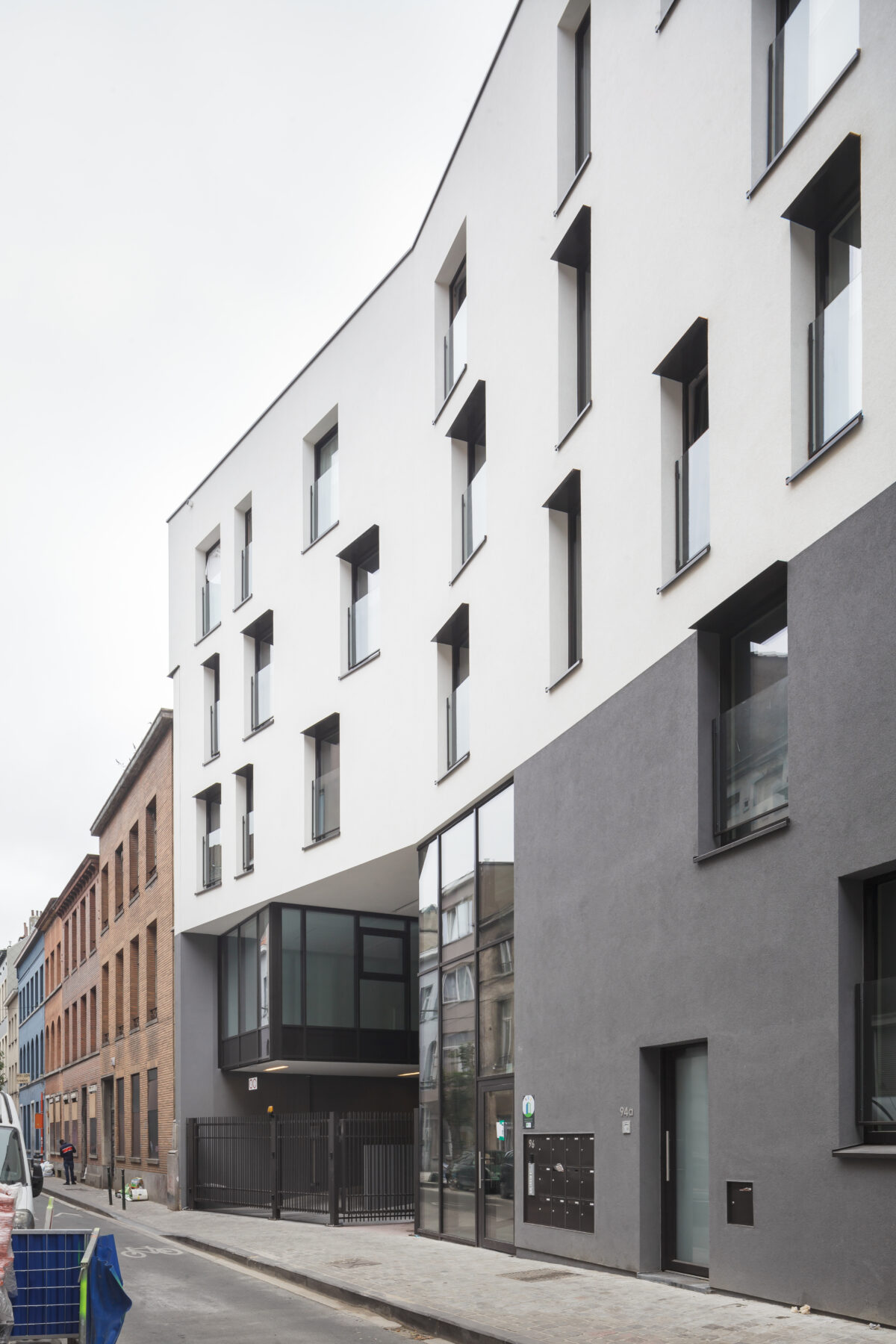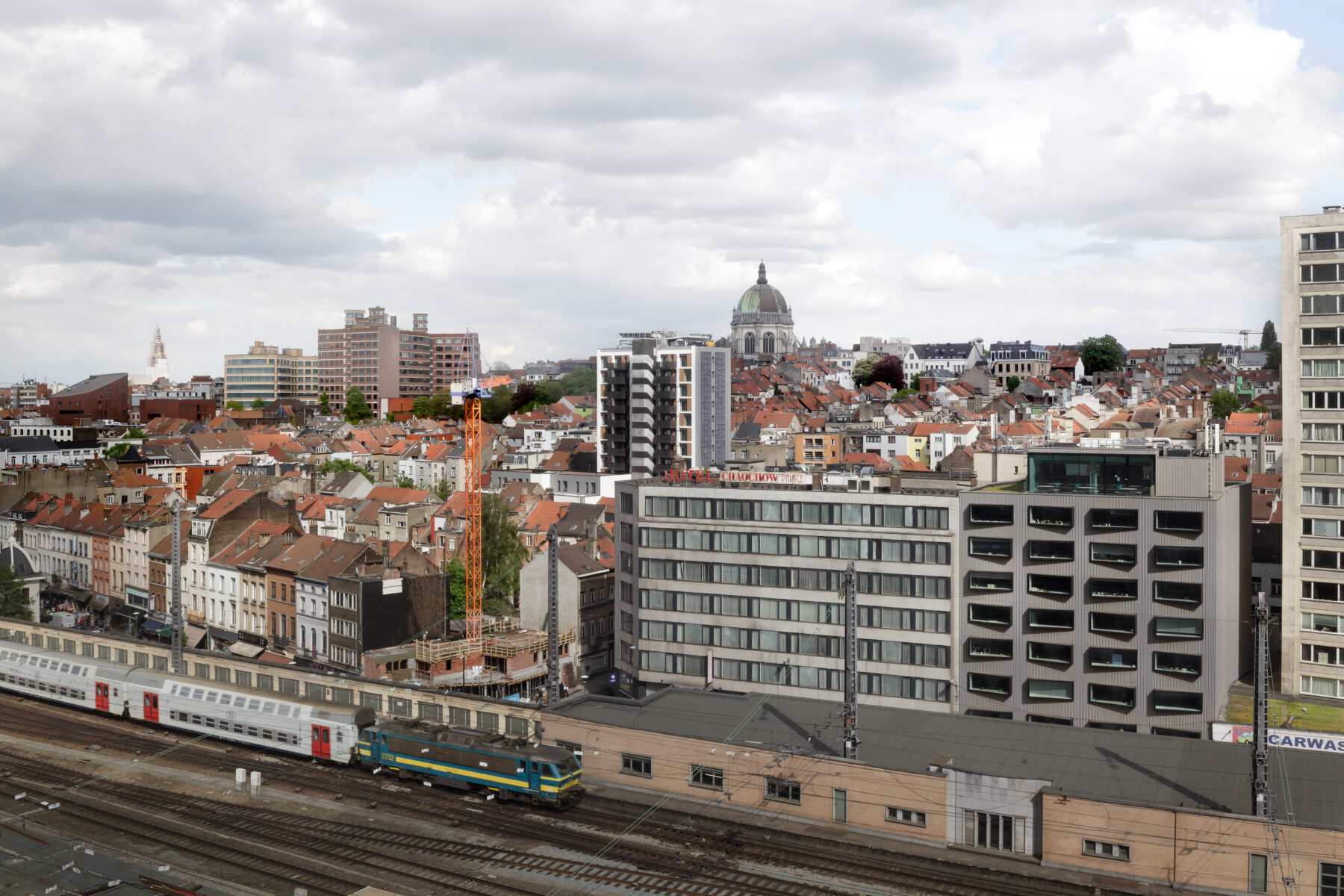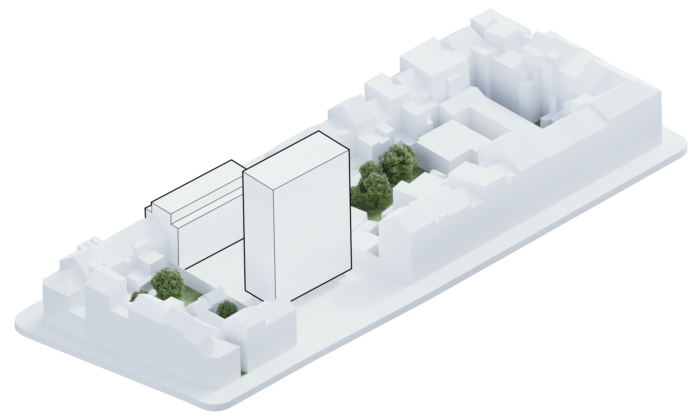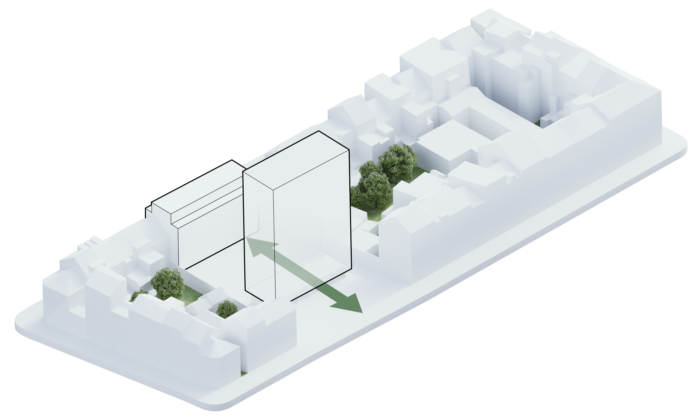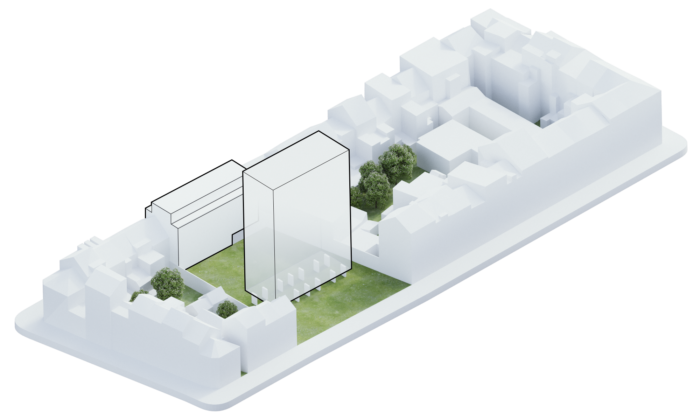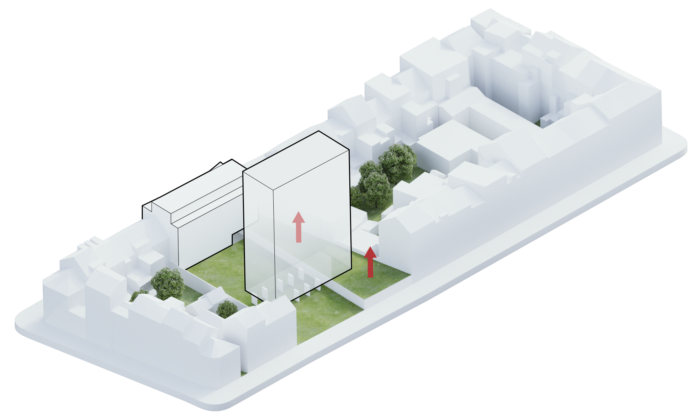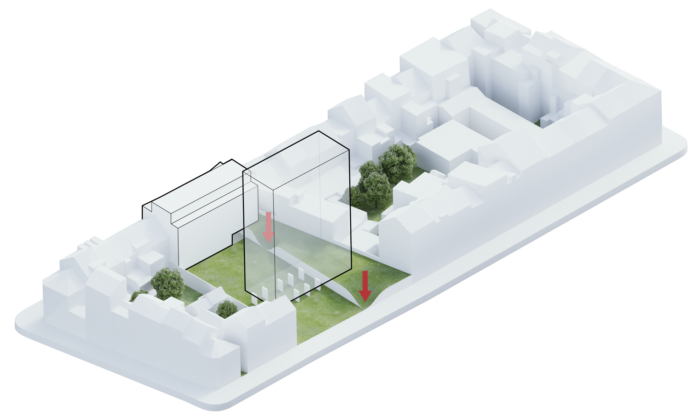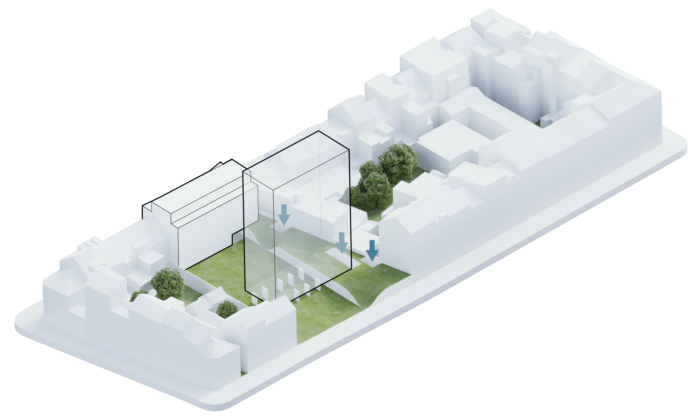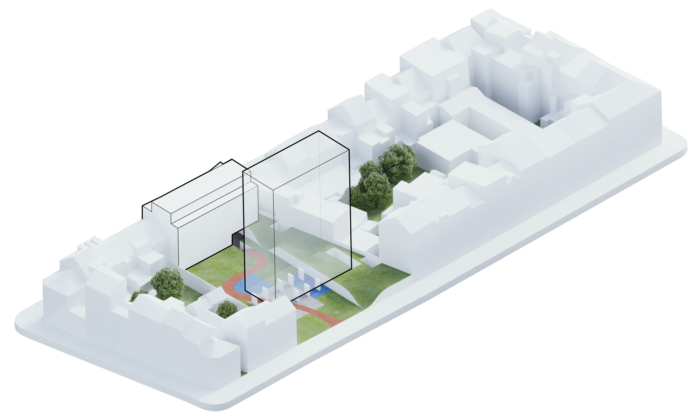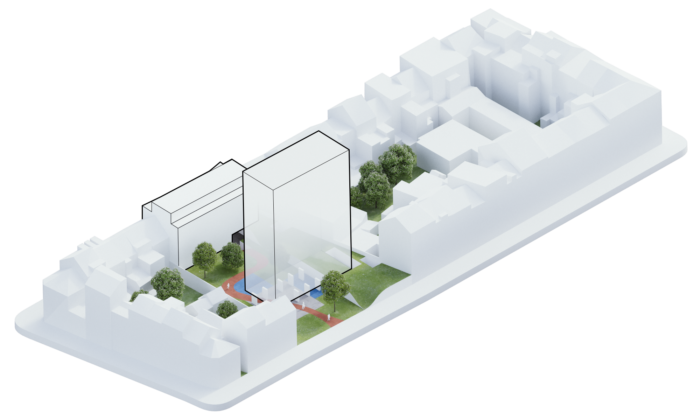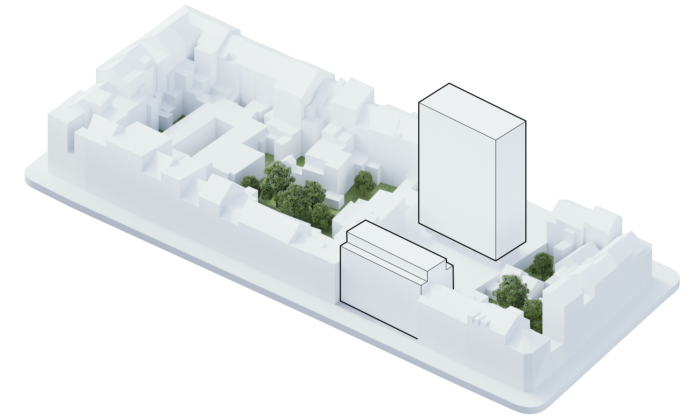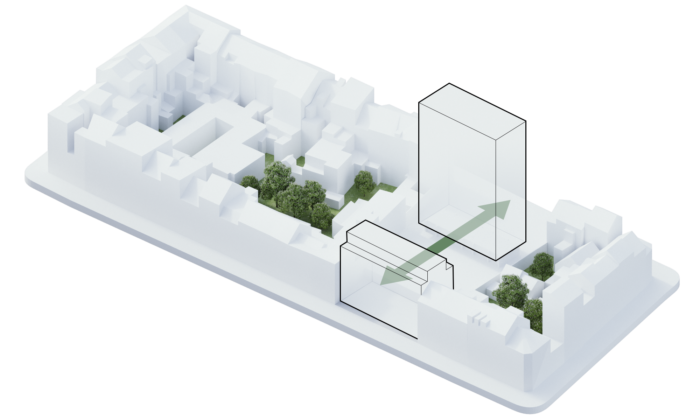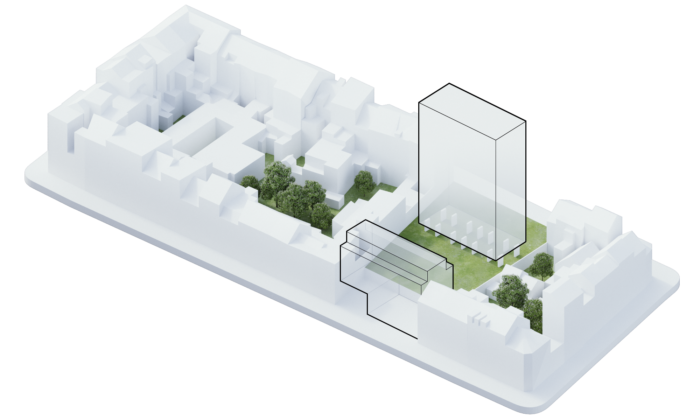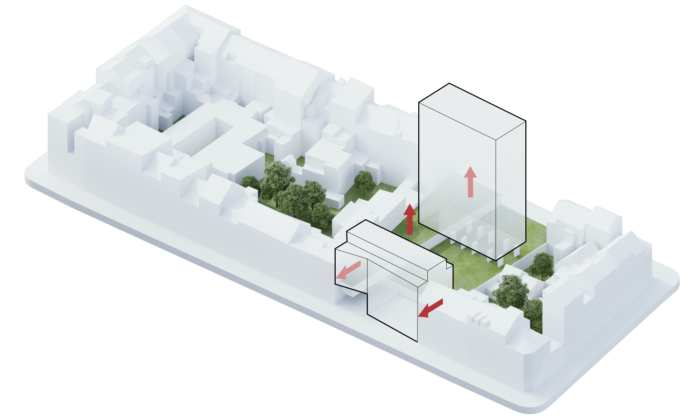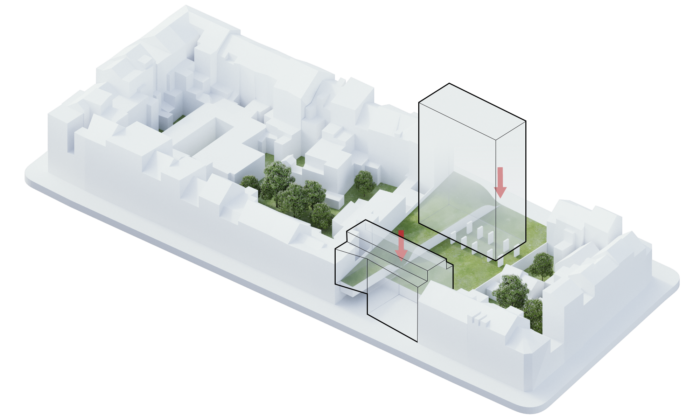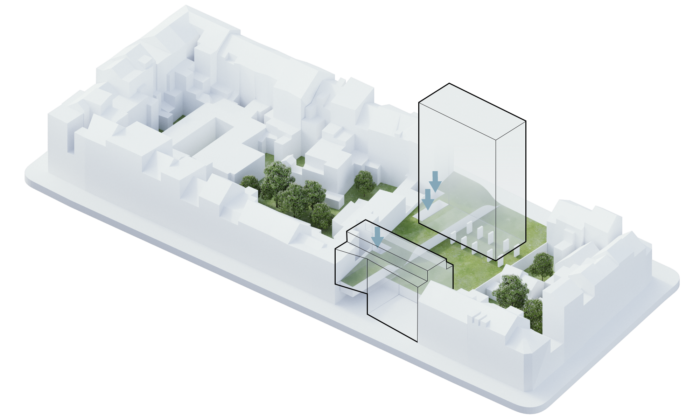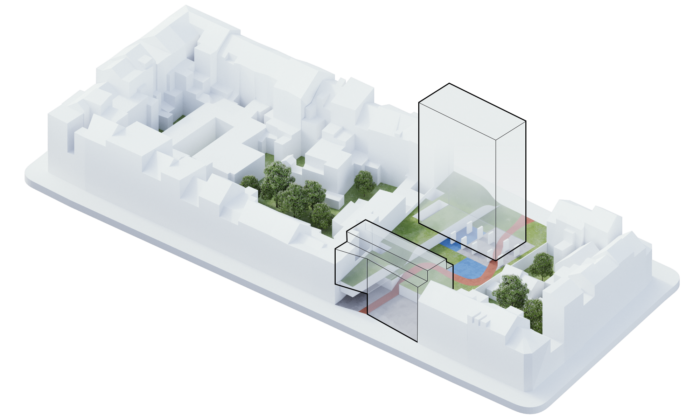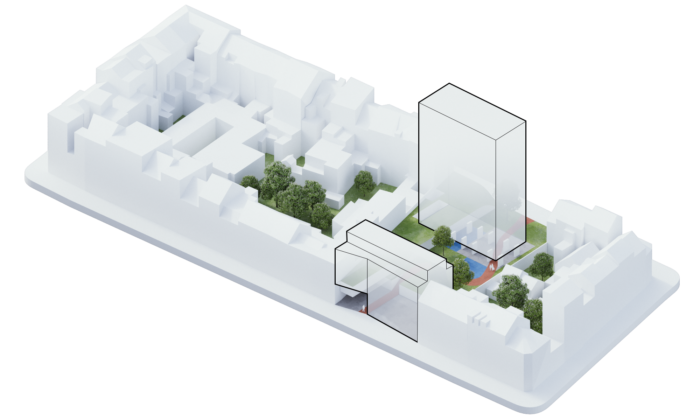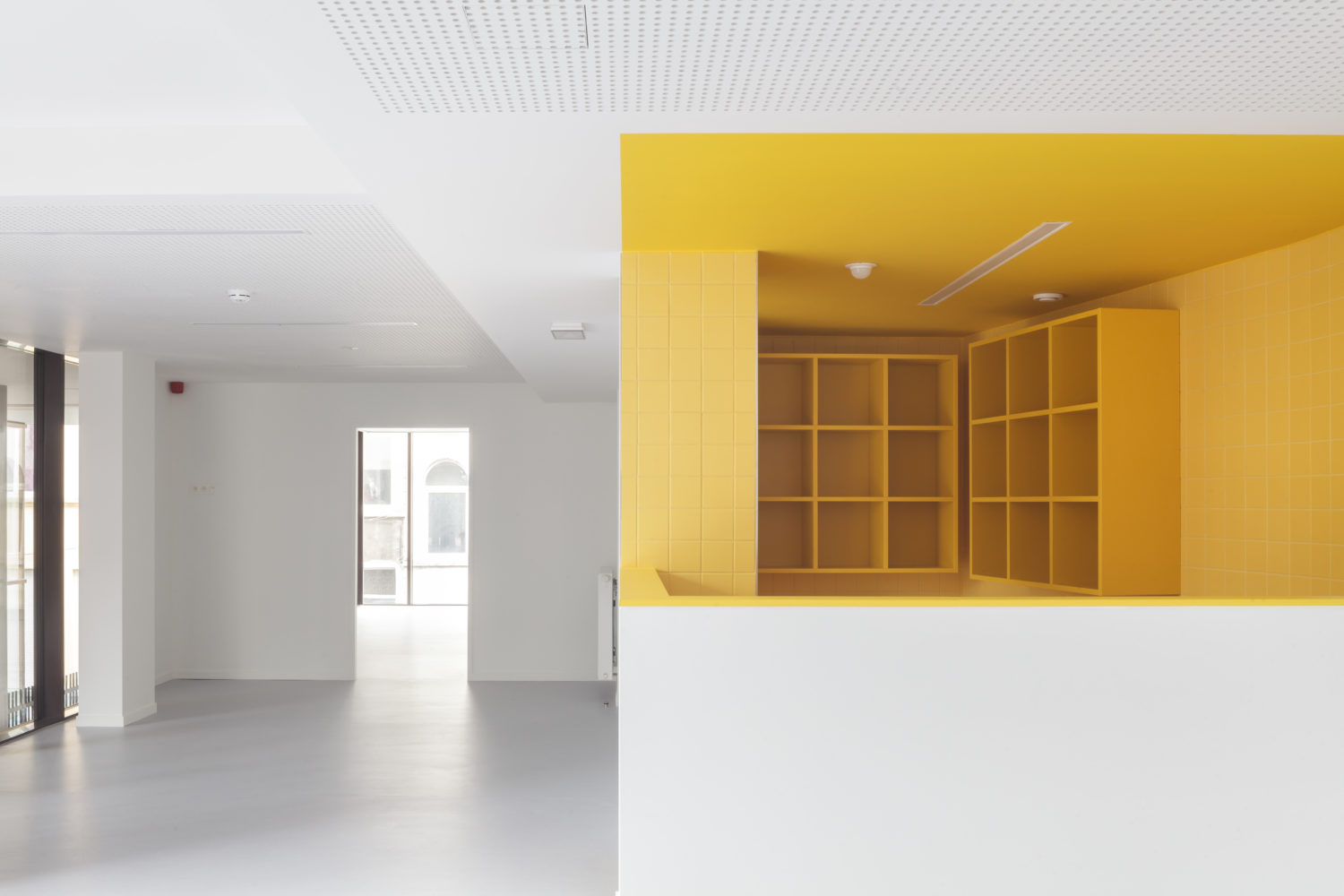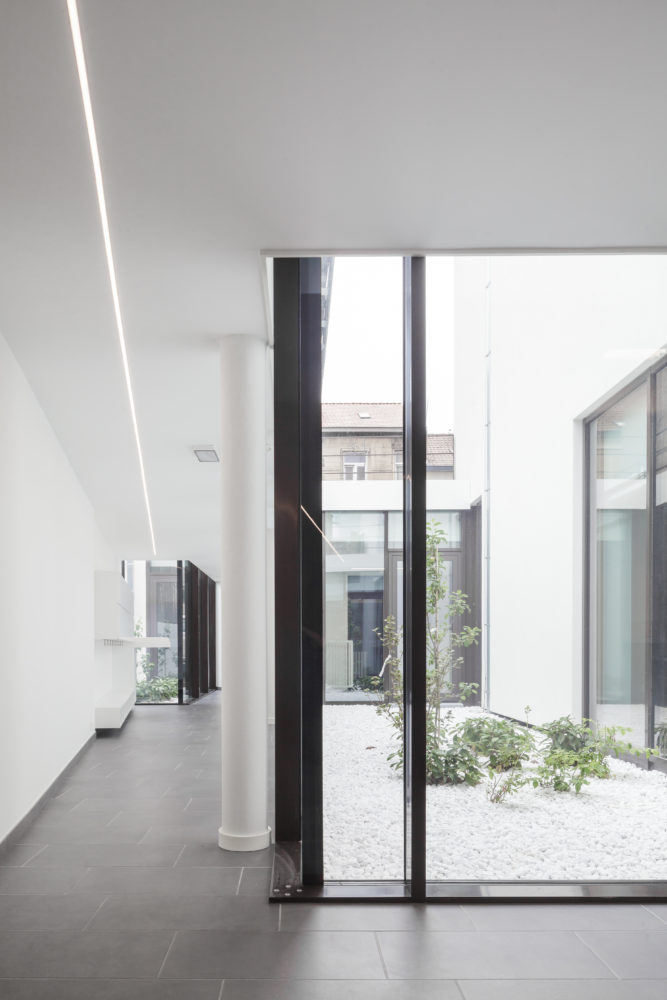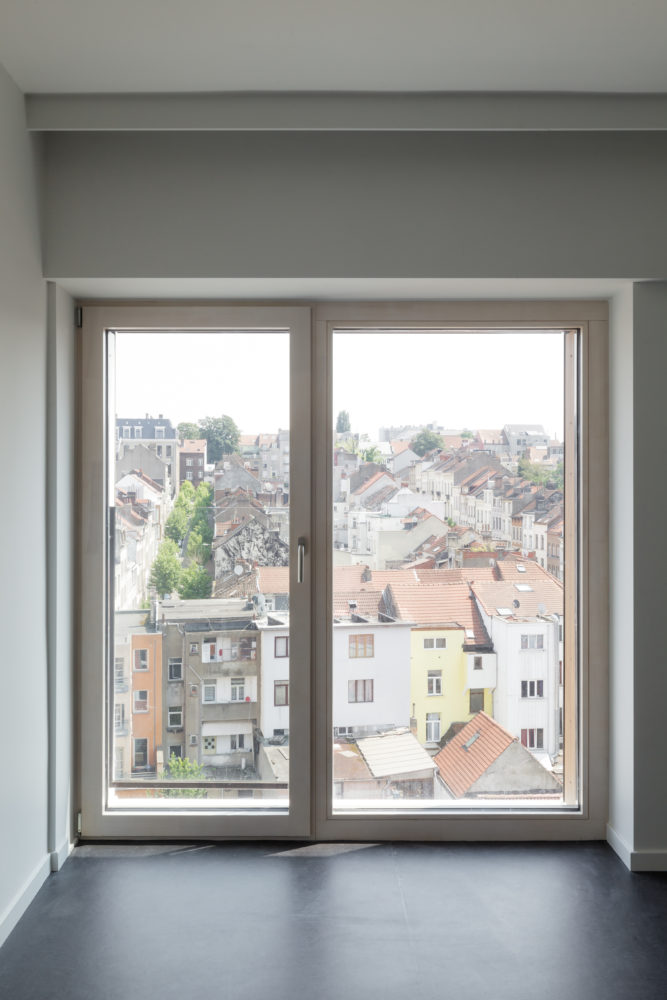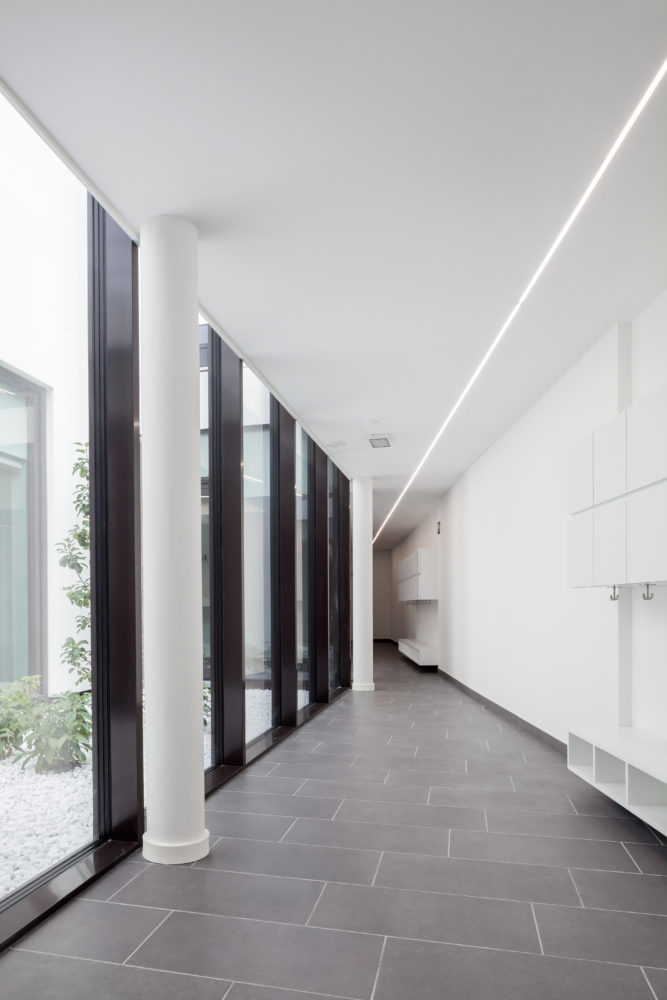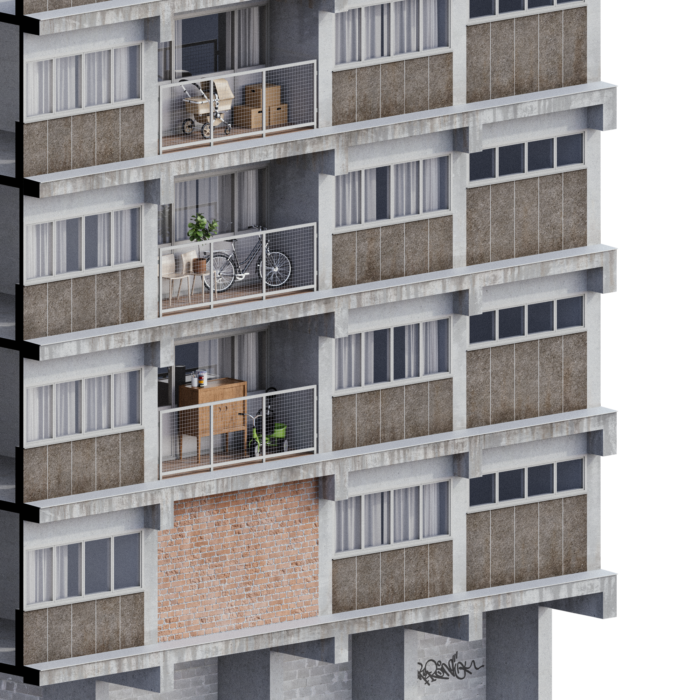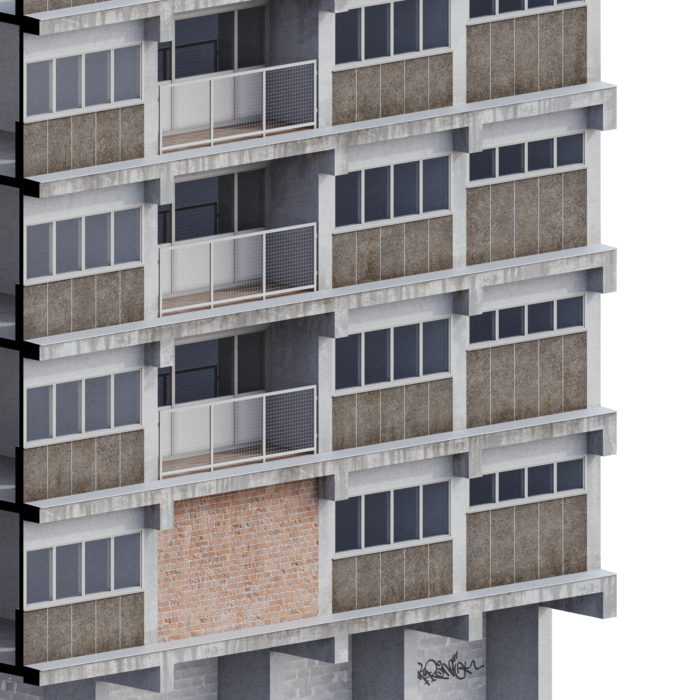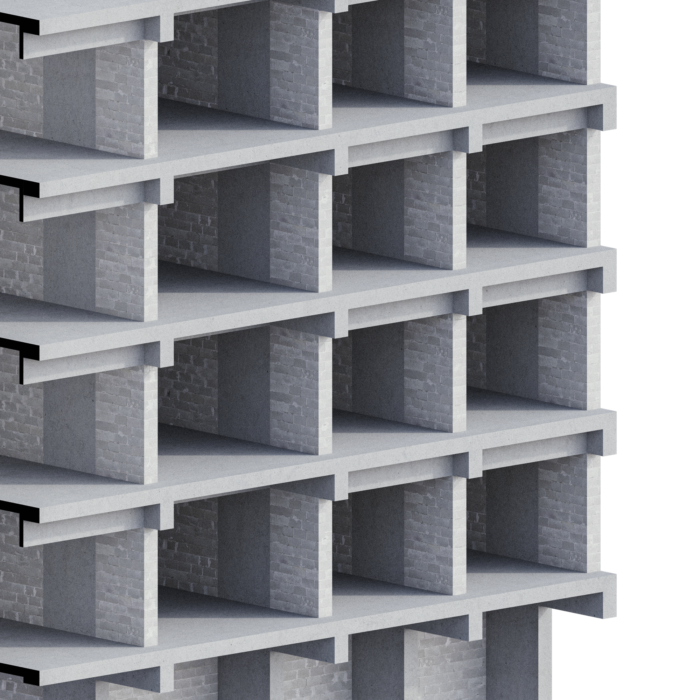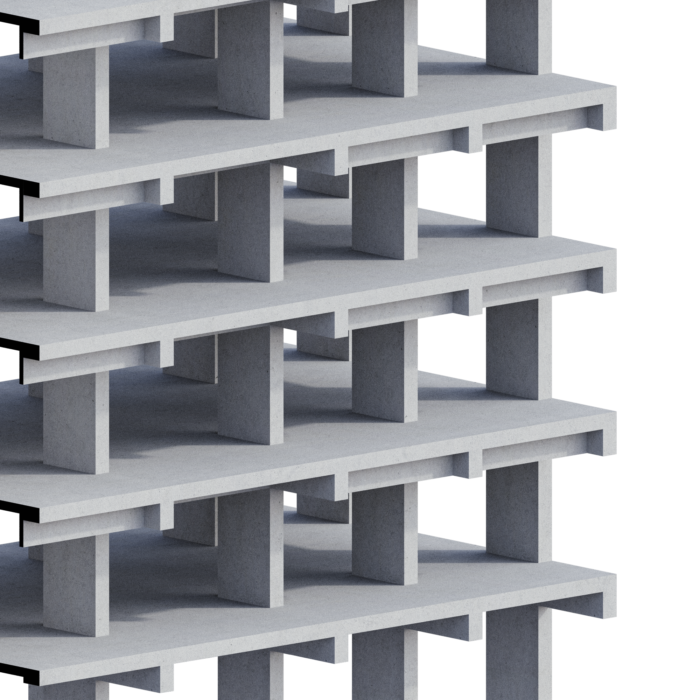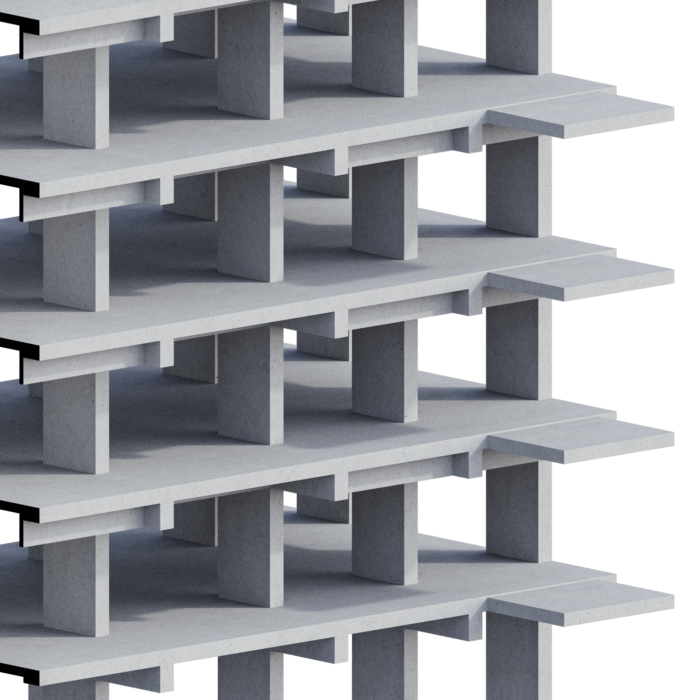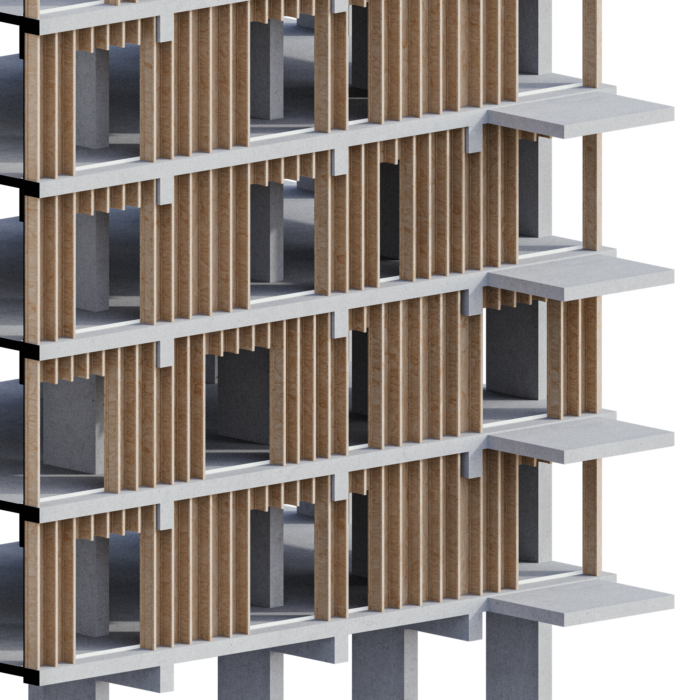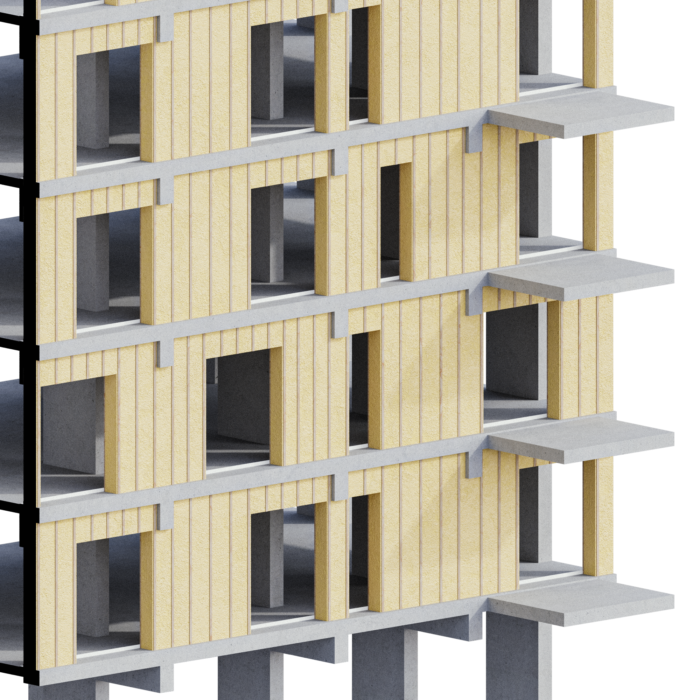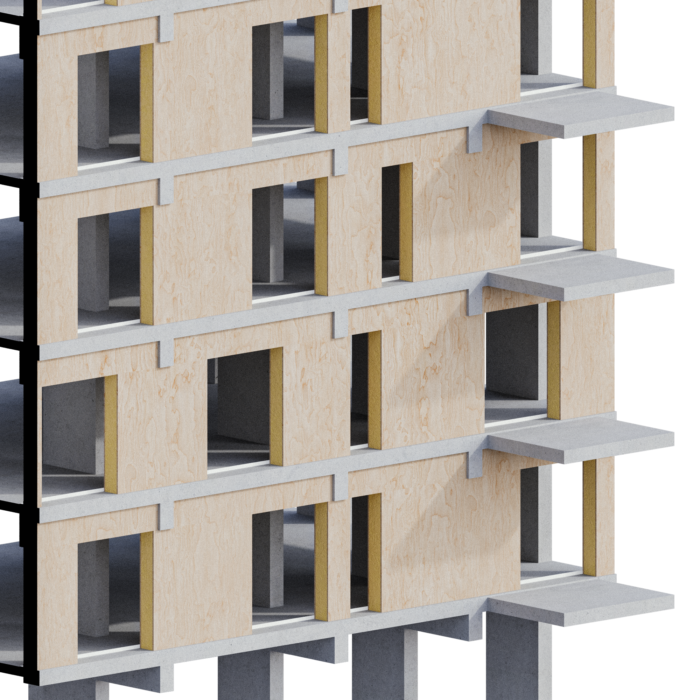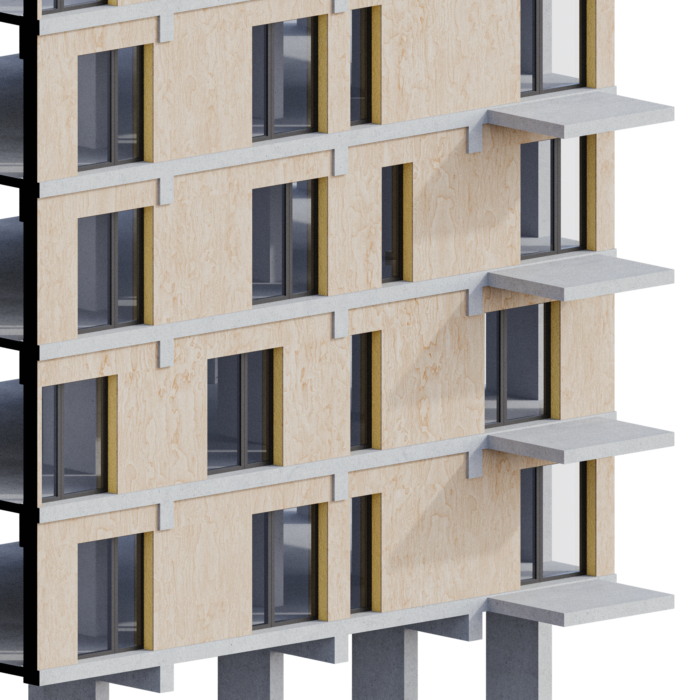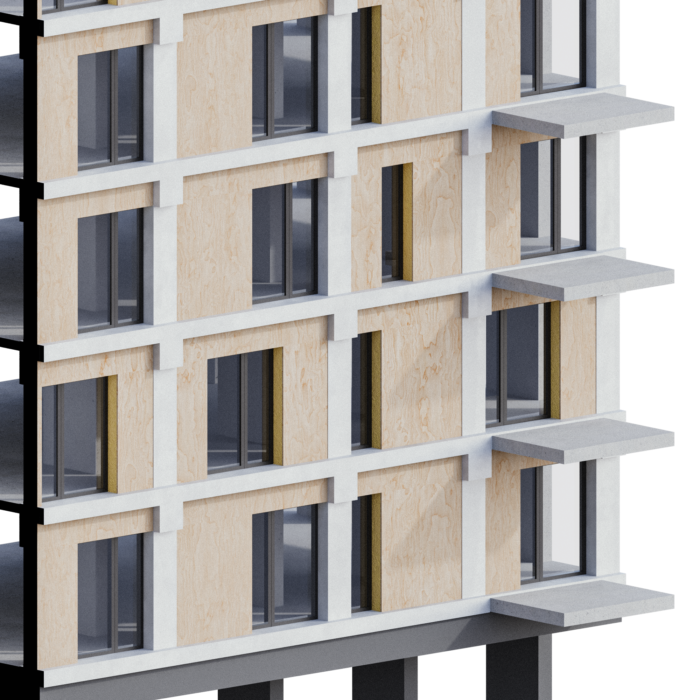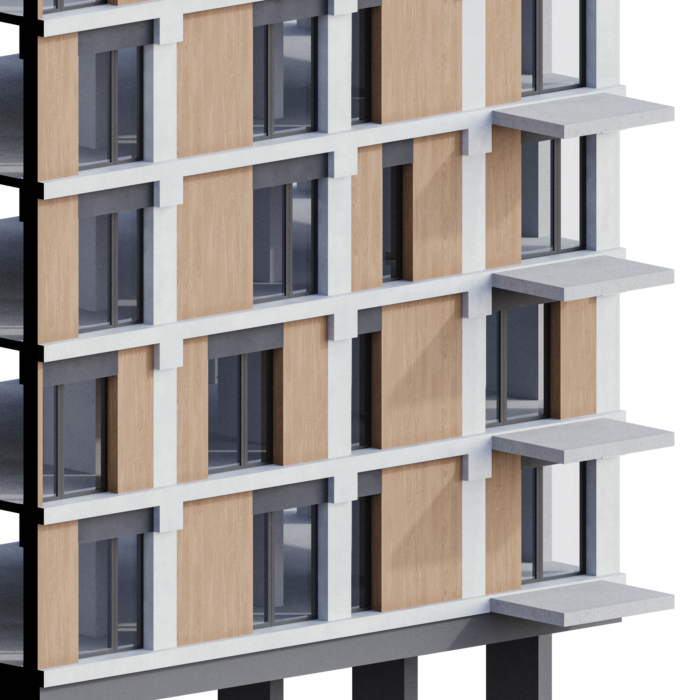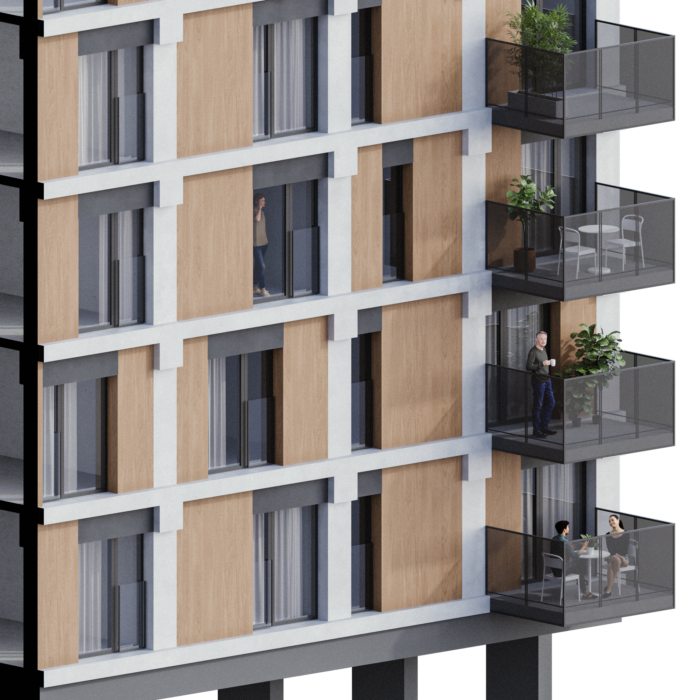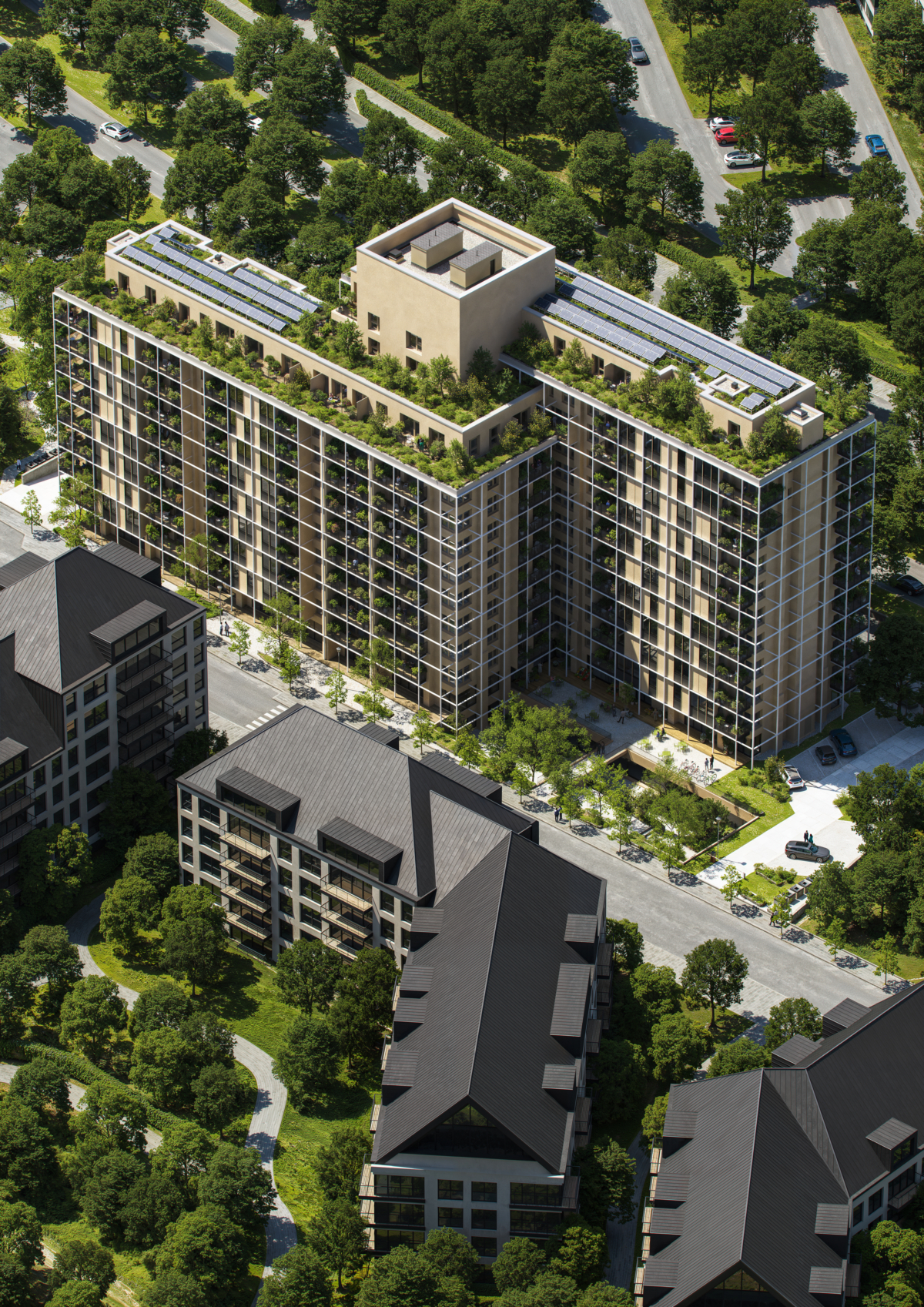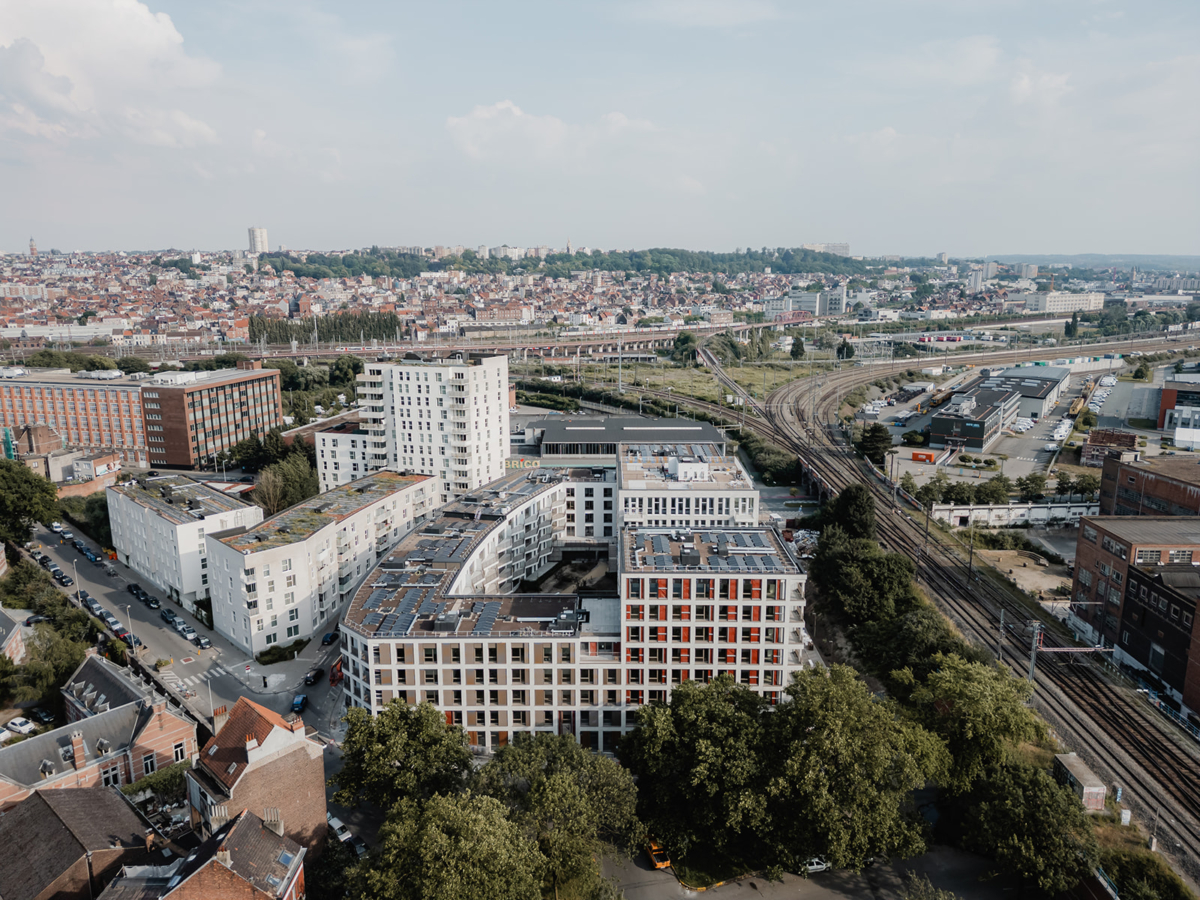We didn’t demolish, we reimagined. A2M transformed the Linné-Plantes ensemble into a more generous, open place to live. The 50 social housing units were upgraded to Passive House standards, with airtight envelopes, new energy systems and smarter layouts. Fourteen different apartment types now offer variety, daylight and outdoor access. Each home gained a terrace, and the building gained clarity. On the ground floor, we opened things up: reconnecting with the street, improving visibility, and making space for a nursery that bridges generations. Its green roof blends into a semi-public park, planted between the buildings. More than landscape, this planted inner space acts as a connector, linking entrances, shared paths and all functions across the site. Prefabricated wooden panels soften the façades and cut construction time. The project didn’t aim for spectacle, it aimed for comfort, flexibility and dignity in everyday life.
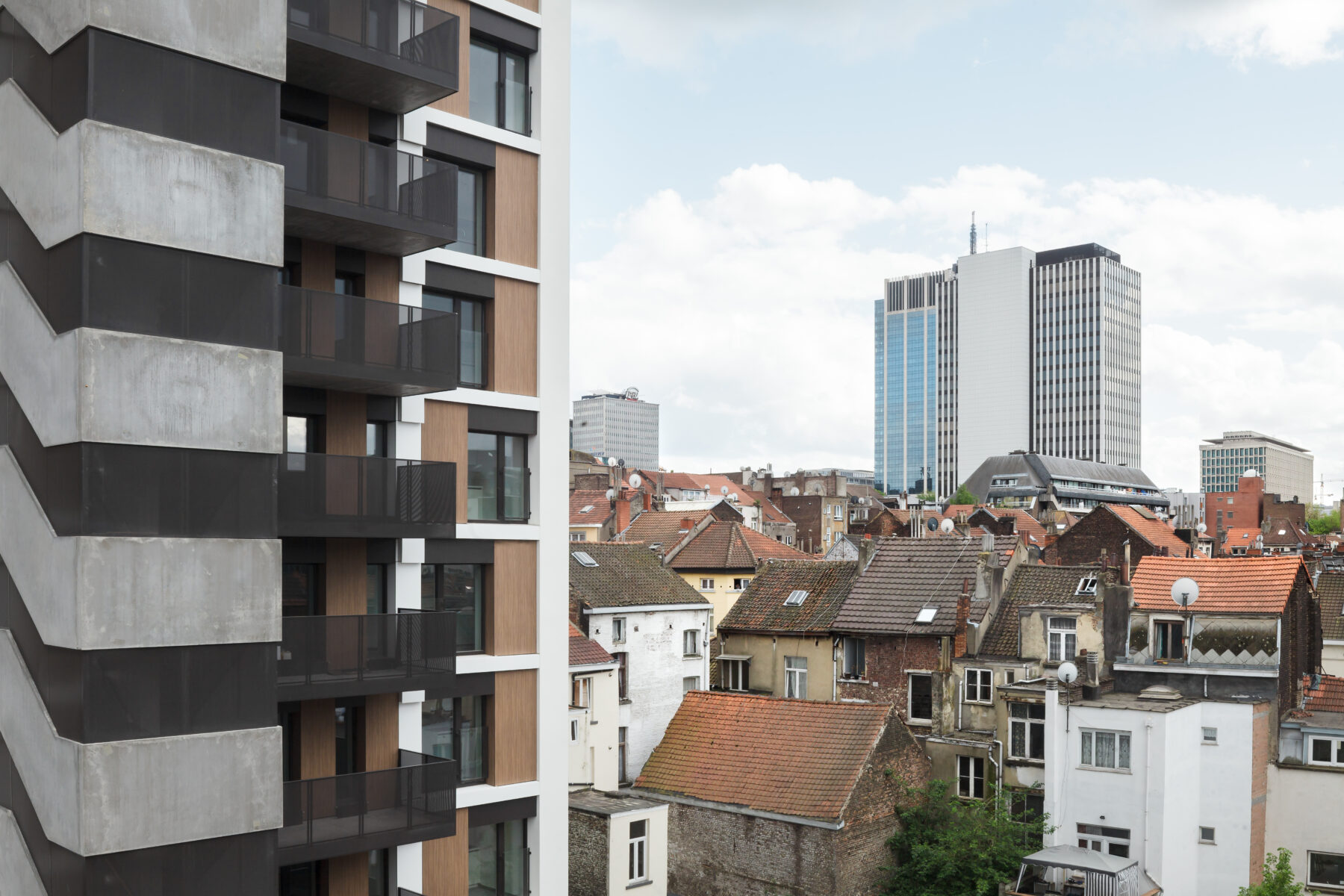
- 2013 - 2018
- Beliris
- Architecture, Climate Design
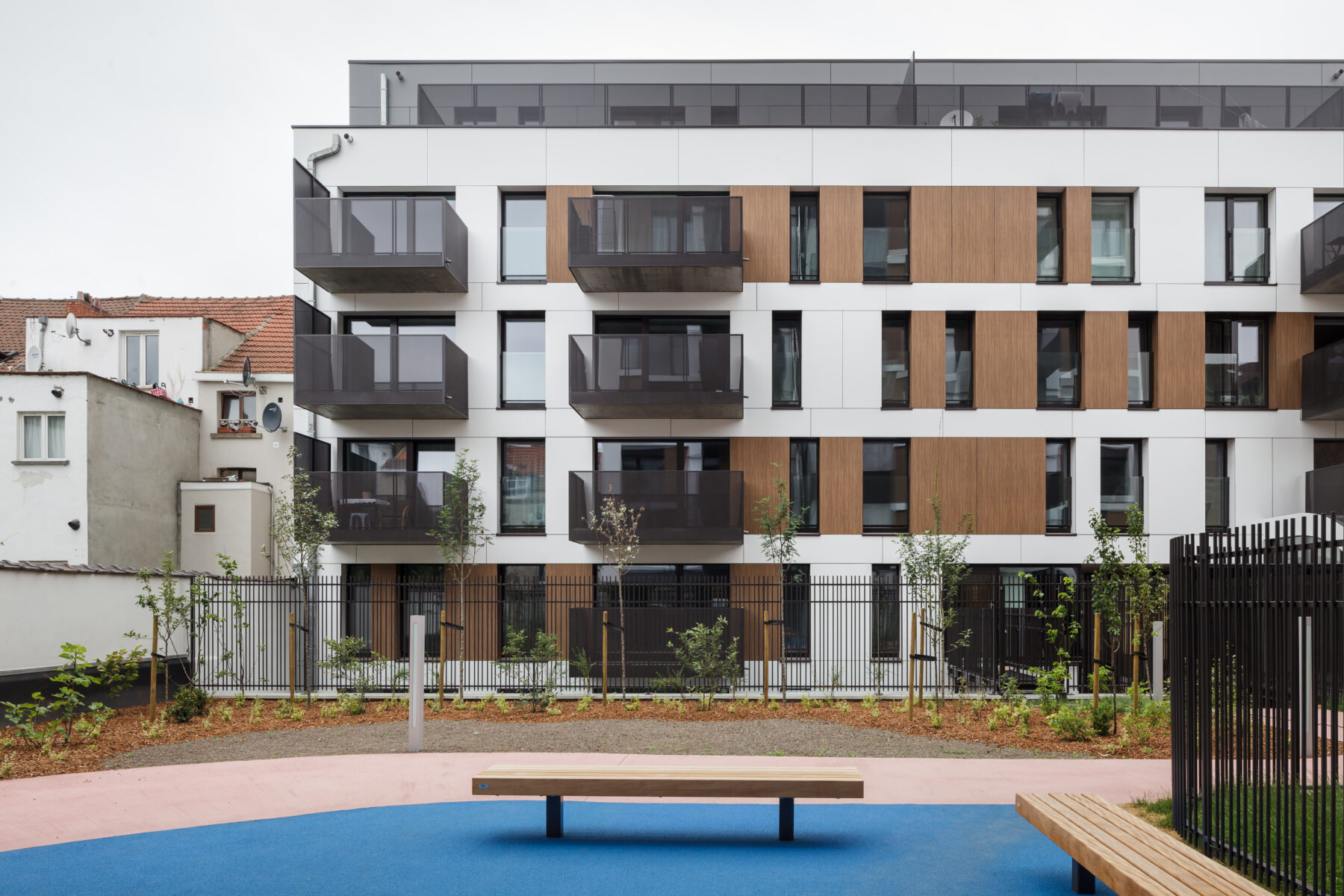
Behind Brussels North Station, the Linné-Plantes site consisted of two deteriorated social housing buildings: a 13-storey tower from 1958 on rue Linné, and a five-story apartment block from 1970 on rue des Plantes. Both were in poor physical and energetic condition, with outdated systems, inefficient layouts, and limited access to outdoor space. Moisture problems, insufficient insulation, and a lack of natural light affected everyday comfort. The tower’s modernist rigor had eroded over time, leaving behind a monolithic presence with little architectural expression. Located in the Quartier Brabant, a dense and topographically steep neighborhood composed mostly of low-rise family houses, the tower stood out sharply in scale and typology. This contrast only reinforced its sense of disconnection. Public space around the buildings was neglected and poorly maintained, with informal waste dumping and limited pedestrian legibility. The site had not just become isolated from its surroundings; it contributed to their decline. The Brussels Region selected it as a pilot for transformation, not simply to restore the buildings, but to re-anchor them in the urban fabric.
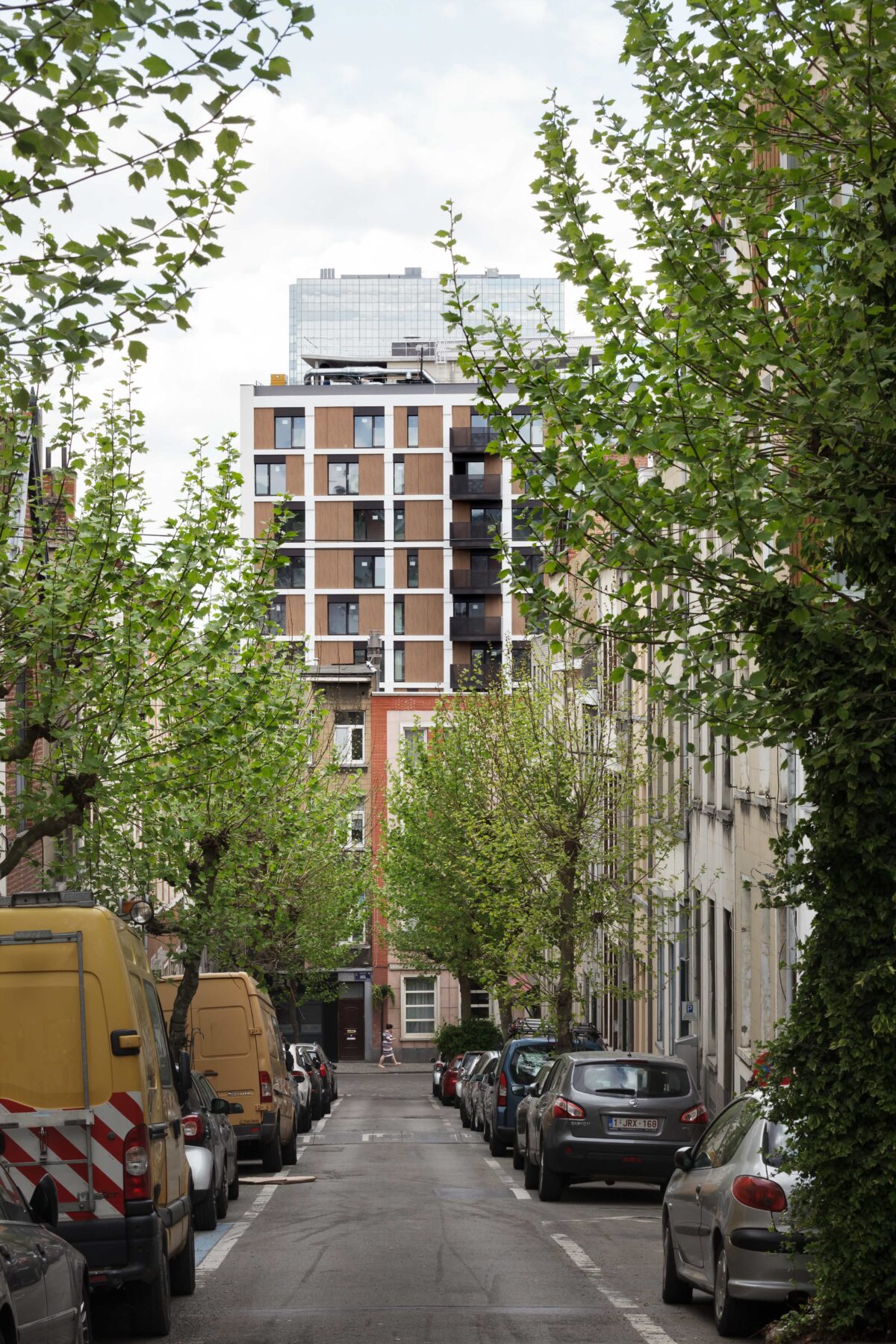
for everyday life.
The Linné-Plantes project does more than upgrade buildings. It repositions them in the life of the city. Where a grey slab once stood, there is now rhythm, light and greenery. The semi-public garden forms a quiet hinge in the neighbourhood: a space for walking, gathering and breathing. It helps regulate temperature during heatwaves and reconnects a fragmented urban block. By engaging the site’s topography, the project creates an architectural promenade — a sequence of passages and perspectives that unfold gradually between levels. Residents benefit from improved air quality, access to outdoor space and a built environment that feels legible and open. Views are no longer blocked; movement is no longer cut. Shared stairs and pathways encourage encounter without forcing it. The mix of housing, childcare and collective outdoor space ensures life on site from morning to evening. The architecture no longer retreats. It participates. And in doing so, it shifts the narrative: from minimal survival to spatial quality, from isolation to belonging. Social housing doesn’t just follow. It can lead.
An interactive visual window into our planet's
changing climate, based on the most recent
measurements and climate model predictions
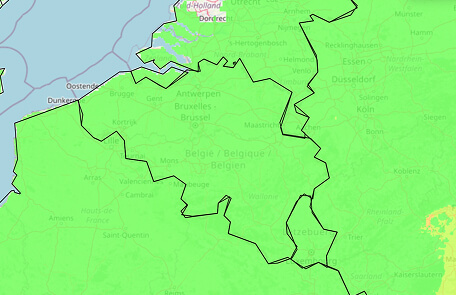
Brussels’ climate is warm and temperate. Rainfall in Brussels is fairly consistent throughout the year, with precipitation even in the driest months. According to the Köppen and Geiger classification system, this location is designated as Cfb, typical of oceanic climates. The average annual temperature recorded in Brussels is approximately 10.5 °C, while total annual precipitation reaches around 850 mm.
| Location | Brussels, BEL |
| Status | Built |
| Procedure | Competition, 1st Prize |
| Size | 5,422 m² |
| Collaboration | Stubeco, Istema, D2S International |
| Awards | Laureate – Bâtiments Exemplaires, Brussels Environment, 2011 |
| Publication | Building in Existing Contexts, DETAIL, 2020 Renovation, Extension, Reconstruction, DETAIL Magazine, 12/2019 |
| Photographer | Stijn Bollaert |
The original challenge? Renovate a decaying modernist tower and its annex, not by neutralizing their anomalies, but by turning them into opportunities. A2M approached it head-on: opening up the ground floors, rethinking circulation, and restoring clarity to the site’s spatial logic. Prefabricated timber-frame façades, insulated with cellulose, improved thermal performance and reduced construction time. Airtight envelopes, Passive House strategies and a centralised heating system brought energy demand down from 160 to just 13 kWh/m² per year. Solar collectors provide hot water, and photovoltaic panels integrated into the south façade contribute to on-site electricity production — a form of BIPV before the term was widespread. At roof level, Cocolo, a collective space for residents, crowns the intervention. In 2012, the project was awarded the Exemplary Buildings (BATEX) label by the Brussels Region. A reminder that ambition and affordability are not opposites. They are co-pilots in transformation.
